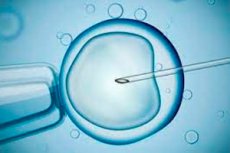New publications
How to increase the chances of IVF success?
Last reviewed: 29.06.2025

All iLive content is medically reviewed or fact checked to ensure as much factual accuracy as possible.
We have strict sourcing guidelines and only link to reputable media sites, academic research institutions and, whenever possible, medically peer reviewed studies. Note that the numbers in parentheses ([1], [2], etc.) are clickable links to these studies.
If you feel that any of our content is inaccurate, out-of-date, or otherwise questionable, please select it and press Ctrl + Enter.

The aging process of endometrial stromal structures lining the inner uterine surface may make it difficult for the embryo to attach to the uterus. Such a conclusion was recently made by scientists. The cause of the problem, according to them, is the loss of the reaction of stroma to hormonal impulses and prolactin production, as well as other factors important for the implantation process. At the same time, the experts noted that these negative aspects can be avoided by using senomorphic agents - drugs that inhibit the phenotype of cell aging without changing the number of cells. Clinical application of these drugs allows to significantly increase the chances of success iVF.
The endometrial tissue changes dramatically during the monthly cycle: there is an active transformation of stromal cells into decidual cells, which ensure the normal attachment of the embryo in the wall and produce components required for the further development of the fetus (in particular prolactin ). If this process, called decidualization, is disrupted, the woman develops infertility.
Researchers have proven that aging stroma leads to failure of cell transformation, which blocks adequate implantation and makes further pregnancy impossible. Aged cells stop dividing, enlarge, their DNA is damaged, gene failures are noted. In addition, we studied such points as the reaction of cells to the introduction of progesterone and estrogen - hormones that send an impulse to the stroma to start the processes of decidualization.
It was found that the aged stromal structures showed insufficient response to the introduction of sex hormones and, as a result, poorly transformed into mature cells. In addition, their transforming marker genes functioned much worse, and they prevented the existing young cells from transforming. Prolactin was secreted about one and a half times less than in young structures, which significantly reduced the probability of quality embryo attachment: its immersion in the stroma was insufficient and weak.
When the scientists additionally administered senomorphic drugs, the senescent cells became responsive to hormonal messengers again, and the likelihood of successful implantation increased by 1.4 times.
The new method requires clinical adaptation, but specialists reproductologists are more than determined. By all indications, doctors will soon have a new opportunity to significantly increase the efficiency of in vitro fertilization procedures and reduce the number of patients who have an unfavorable experience of multiple failed implantation cycles. It is possible that the use of senomorphic means will help to solve some other issues of successful reproduction.
The results of the research paper are published on pages of Human Reproduction
